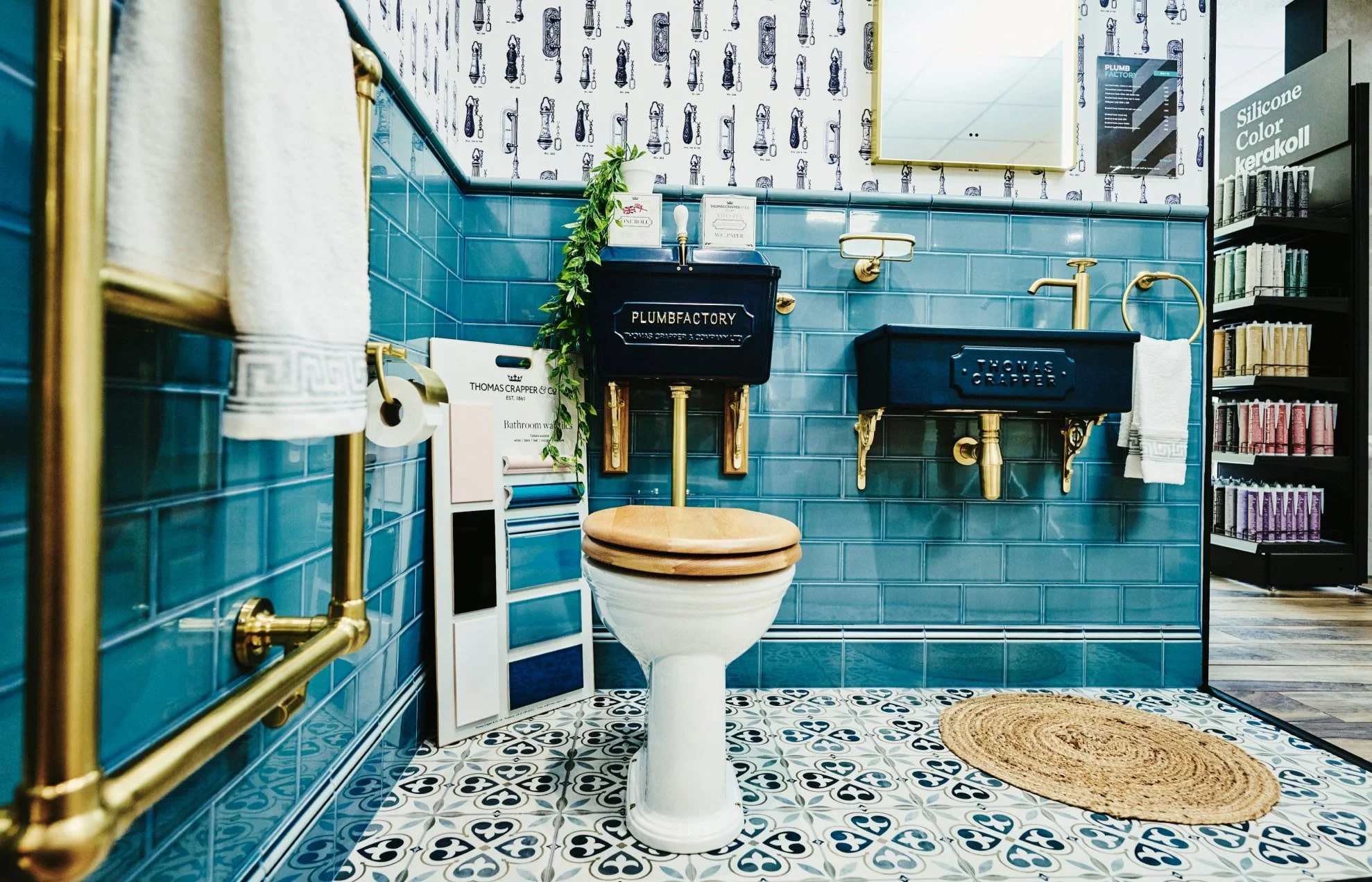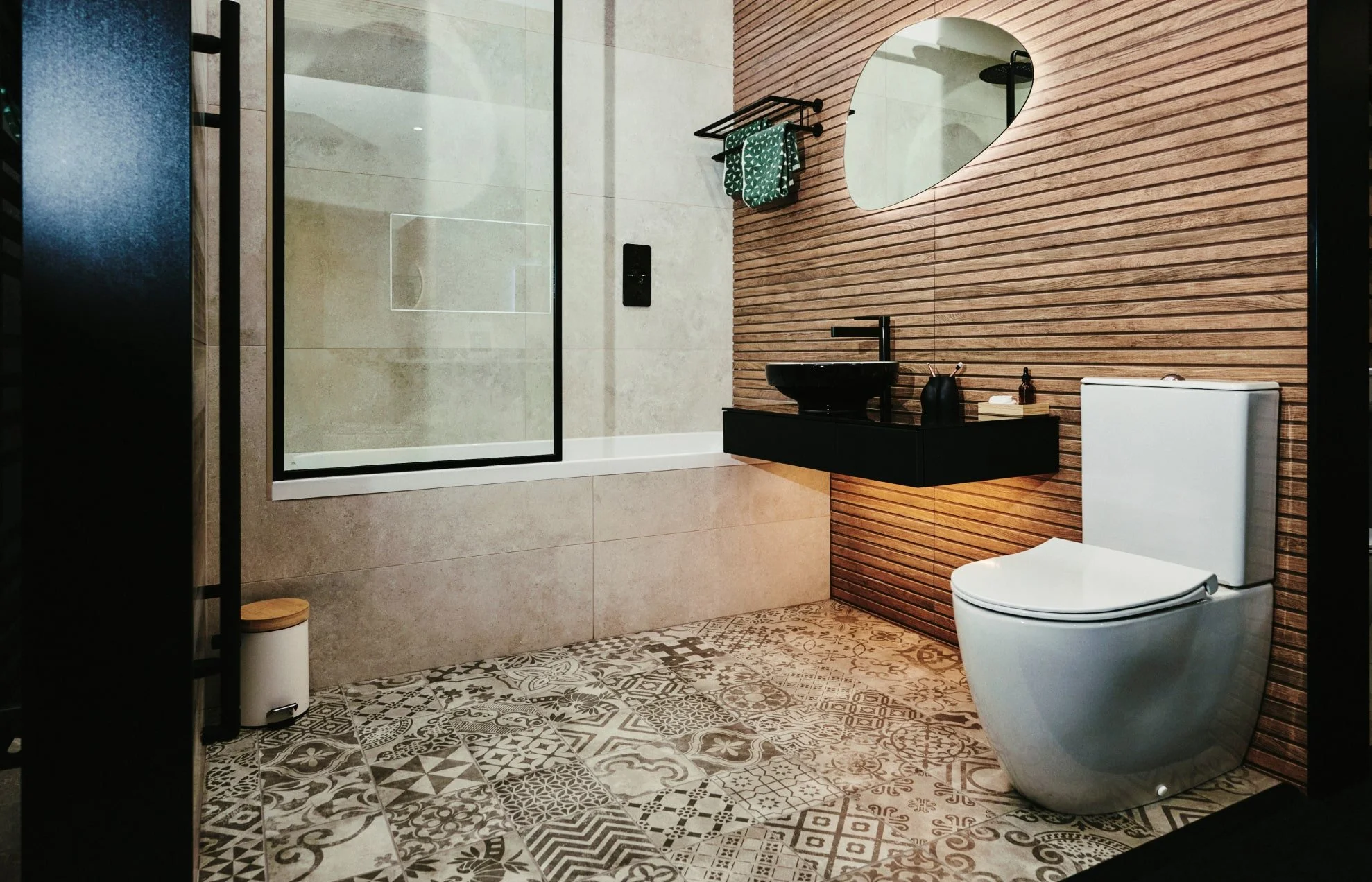How to Choose the Best Toilet for Your Bathroom
Let’s be honest, choosing a toilet isn’t usually the highlight of a bathroom renovation. But the truth is, it’s one of the most important decisions you’ll make.
After all, you’re going to be spending more time with it than almost anything else in the room. Comfort, style, and reliability all matter, and picking the right toilet can turn your bathroom from functional to fabulous.
Whether you want something sleek and modern, classic and timeless, or a clever design that maximises space, at Plumb Factory we’ve got options that fit every style and budget.
We can help you buy a new toilet, find the perfect compatible seat, and make sure it works perfectly with the rest of your bathroom design.
Understanding Different Types of Toilets
Choosing a toilet isn’t just about picking the first one that looks nice. Different types of toilets work in different ways, suit different spaces, and can completely change the feel of your bathroom.
Let’s break down the main options you’ll find in the UK so you can see which one fits your style and needs.
Close-Coupled Toilets
Close-coupled toilets are the classic choice. The cistern sits directly on the pan, which keeps the whole unit compact and easy to install. These toilets are straightforward, reliable, and suit almost any bathroom style.
They’re also easy to maintain and replace if needed, which is why they remain a firm favourite in many UK homes. If you’re after a toilet that’s simple, functional, and hassle-free, a close-coupled option could be the way to go.
Back-to-Wall Toilets
Back-to-wall toilets take things up a notch on the design front. The pan sits flush against the wall, while the cistern is hidden inside a unit or wall.
This gives your bathroom clean, modern lines and makes it easier to keep tidy. Back-to-wall toilets are ideal if you’re after a sleek, contemporary look without compromising on comfort.
Wall-Hung Toilets
If minimalism is your thing, wall-hung toilets are a real winner. The pan is mounted directly to the wall, with the cistern concealed inside the wall itself. This not only looks ultra-modern but also makes cleaning around the toilet a breeze.
Wall-hung toilets are perfect for smaller bathrooms because they create the illusion of more space while keeping everything neat and streamlined.
Close-Coupled vs Wall-Hung vs Back-to-Wall
So how do you choose between them? Here’s a quick guide:
Close-Coupled: Easy installation, traditional look, compact and practical, generally more affordable.
Back-to-Wall: Modern, sleek, easier to clean around, cistern hidden, slightly higher cost and installation complexity.Wall-Hung: Minimalist, space-saving, ultra-easy to clean, requires professional installation, higher price point but high style impact.
Each style has its strengths depending on your bathroom size, design ambitions, and budget. Whether you’re after classic charm or contemporary chic, understanding the different types of toilets in the UK helps you pick the one that’s just right for your space.
Key Considerations When Choosing a Toilet
Picking a toilet isn’t just about aesthetics. The right choice combines practicality, comfort, and style to suit your bathroom and your lifestyle. Here’s what to think about before you commit.
Bathroom Size and Layout
The size and layout of your bathroom play a huge role in which toilet will work best. In smaller bathrooms, a compact toilet or a wall-hung design can make the space feel larger while keeping everything functional.
In larger bathrooms, standard or back-to-wall toilets can fill the space without looking out of place. Taking the time to measure and plan your layout ensures your new bathroom toilet fits perfectly, looks balanced, and avoids any awkward squeezes.
Comfort and Ergonomics
You’ll be spending more time on your toilet than you might think, so comfort matters. Standard-height toilets suit most people, but comfort-height options provide a slightly taller seat, which can make sitting and standing easier.
Seat shape is also a personal choice: round seats are traditional and space-saving, while elongated seats give a more generous, comfortable feel. Choosing the right combination of height and shape makes your daily routine far more enjoyable.
Water Efficiency and Flushing Systems
Modern toilets do more than just handle business efficiently, they save water too. Single-flush toilets are simple and reliable, but dual-flush systems let you choose a smaller flush for liquid waste and a larger one for solids, helping you conserve water.
Many of the best toilets in the UK now meet strict water efficiency standards, which can reduce your bills and comply with UK water regulations.
Style and Finish
A toilet should blend seamlessly with your bathroom, not stick out like a sore thumb. White ceramic remains a classic, but coloured options can complement modern designs or bold tile schemes.
Consider the overall look of your bathroom, including vanities, flooring, and fittings, when selecting a style and finish. Matching your toilet to your décor ensures your new bathroom feels cohesive and thoughtfully designed.
One supplier we’re especially proud to stock is Thomas Crapper, known for their beautifully traditional toilets and cisterns that bring timeless character to any bathroom.
Installing Your New Toilet
Getting your new toilet in place might sound straightforward, but there are a few things to consider before you grab a wrench.
DIY vs Professional Installation
If you’re confident with basic plumbing and have a steady hand, installing a toilet yourself can be a satisfying project. Simple close-coupled toilets in good condition may be feasible for DIY, especially if the waste pipe and water supply are in the right place.
However, plumbing mistakes can be costly and messy, from leaks to incorrect alignment, and any issues could affect water efficiency or even void warranties.
Hiring a professional gives you peace of mind. A qualified plumber ensures your toilet is fitted safely, meets UK plumbing regulations, and performs exactly as it should. It also takes the stress out of the process, leaving you to focus on enjoying your new bathroom toilet.
Toilet Seat Compatibility
Picking the right toilet pan is only half the job, you also need a seat that fits perfectly. Different types of toilets in the UK require specific seat shapes, so measuring your pan before you buy is essential.
Consider practical features too. Soft-close seats prevent slamming, quick-release designs make cleaning easier, and different materials can affect comfort and durability.
Choosing a seat that complements your pan keeps your bathroom looking sleek while making everyday use more comfortable.
Choosing the Right Toilet FAQs
What are the main types of toilets in the UK?
In the UK, the most common types of toilets are close-coupled, back-to-wall, and wall-hung. Close-coupled toilets have the cistern sitting directly on the pan, offering a classic look and straightforward installation.
Back-to-wall toilets have the pan flush against the wall with the cistern hidden, creating clean, modern lines. Wall-hung toilets are mounted to the wall with the cistern concealed inside the wall, ideal for minimalist designs and easier cleaning.
How do I choose the right toilet for my bathroom size?
Bathroom size plays a big role in choosing a toilet. Small bathrooms often benefit from compact close-coupled or wall-hung models, which save space and make the room feel less cramped. Larger bathrooms give you more flexibility to opt for standard-size pans, luxury designs, or even feature toilets that make a statement.
What is the best toilet in the UK for water efficiency?
The best toilets in the UK for water efficiency usually feature dual-flush systems, allowing you to choose a smaller flush for liquid waste and a full flush for solids. Many modern toilets are designed to meet UK water regulations while saving water without compromising performance.
Can I install a toilet myself or do I need a professional?
Simple close-coupled toilets can sometimes be installed as a DIY project if your plumbing is straightforward. However, hiring a professional ensures your new bathroom toilet meets UK plumbing standards, prevents leaks, and avoids common installation mistakes.
How do I choose a toilet seat that fits?
Toilet seats must match the shape and size of your pan. Measure your pan before buying and check whether it requires a round or elongated seat.
Features like soft-close hinges, quick-release mechanisms, and the material of the seat are also worth considering for comfort and maintenance.
What is the difference between back-to-wall and wall-hung toilets?
Back-to-wall toilets have the pan sitting flush against the wall with a concealed cistern, offering a sleek look without touching the floor. Wall-hung toilets are mounted entirely on the wall, leaving space underneath for easier cleaning and a minimalist appearance.
Both are excellent choices for modern bathrooms, but wall-hung models require a sturdy wall frame and professional installation.
Do different types of toilets affect my bathroom style?
Absolutely. The toilet you choose can influence the overall look of your bathroom. Close-coupled toilets suit traditional or classic styles, back-to-wall toilets work well in contemporary designs, and wall-hung toilets create a minimalist, modern aesthetic. Your choice should complement your tiles, vanities, and other fixtures.
Where can I buy a toilet in the UK?
You can buy a toilet from specialist bathroom showrooms, online retailers, or suppliers like Plumb Factory. We offer a wide range of types of toilets UK, compatible seats, and accessories, making it easy to find the perfect fit for your bathroom remodel.
How long does a toilet last before needing replacement?
A well-maintained toilet can last 15 to 20 years. Regular cleaning, proper use, and ensuring any worn components are replaced promptly can extend the lifespan of your bathroom toilet.
Are there toilets suitable for small bathrooms?
Yes. Compact close-coupled toilets and wall-hung designs are ideal for small bathrooms. They save space, make the room feel larger, and can be just as stylish and comfortable as standard-size toilets.



